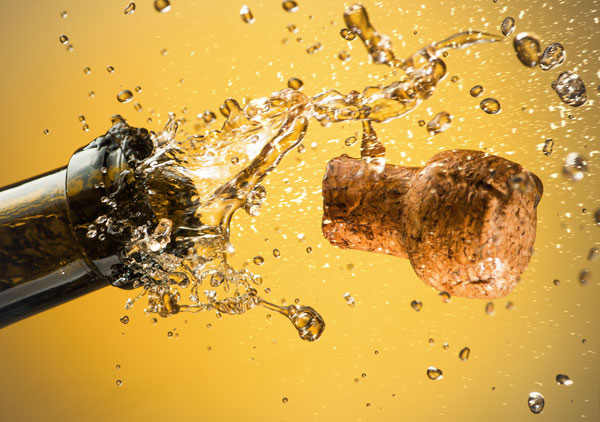
Test yourself on Champagne/brut in this week’s Tuesday Beer Trivia.
For more than a generation, the “Champagne of beers” failed to live up to its billing. No leap of imagination could conjure a magical beverage from that pale yellow, ghostly beer. That all changed with the release of strong, spicy Belgian ales that delighted the drinker with an explosion of aromas and spices and a dry, sparkling mouthfeel.
After you take the Beer Trivia quiz below, scroll down to “Beer Trivia Answer Explanations” section to learn more about champagne/brut beers.
[polldaddy type=”iframe” survey=”0D9EF8F9059359F3″ height=”auto” domain=”2491351″ id=”beer-trivia-example-29″]
Beer Trivia Answer Explanations
Click To Expand
The following explanations were taken from “Et Tu, Brut: Brewing the Champagne of Beers” by Drew Beechum originally featured in the May/June 2006 issue of Zymurgy.
Question 1: Bruts finish dry with final gravities around 1.010 in many examples.
Question 2: The beers center around a grain bill of Belgian Pilsner Malt with 10 to 20 percent sugar to decrease residual gravity.
Question 3: Traditional riddling is done on specially designed A-frame racks that are beyond the necessary investment level for a homebrewer. Instead, modern homebrewers tend to use case boxes. Every few days, you’ll pick up each bottle and give it a quick, hard spin. Over a month, as the bottles are spun, the full case boxes are slowly angled so that the bottles finally rest on their caps. The bottles continue to be spun until the sediment is brought to the neck.
Question 4: The method of disgorgement utilizes a mixture of salt and ice to freeze the neck solid (Drew Beechum suggests utilizing dry ice and acetone, a combination that chills to as low as −90°F (−67°C)).
Question 5: True. During 10 days a first fermentation occurs; the second one lasts just as long. After filtering, Champagne yeast and white rock sugar are added. After that, the bottles are turned and shaken to move the yeast around, and then the yeast is discharged.



Share Post